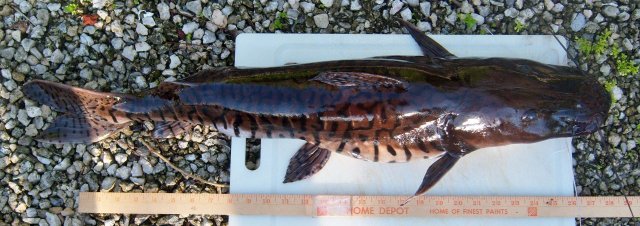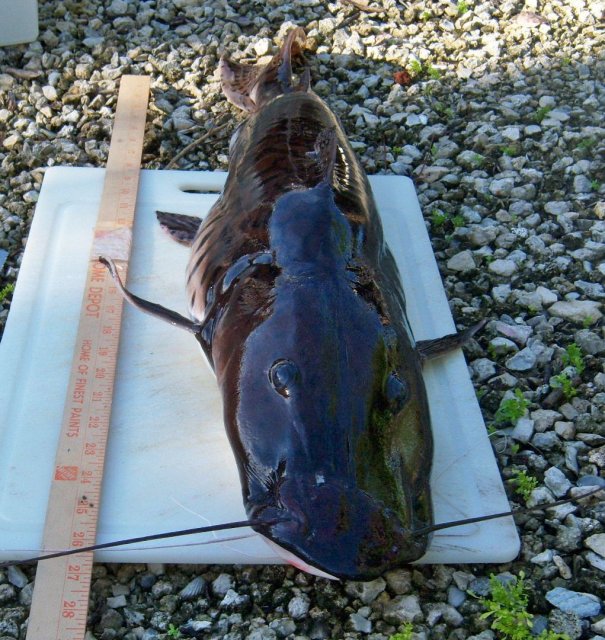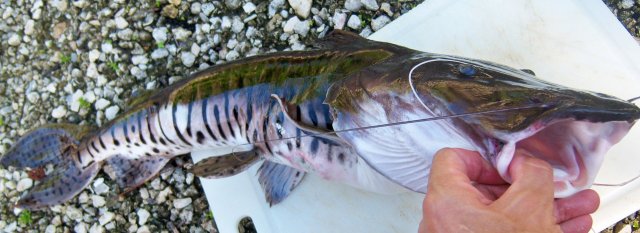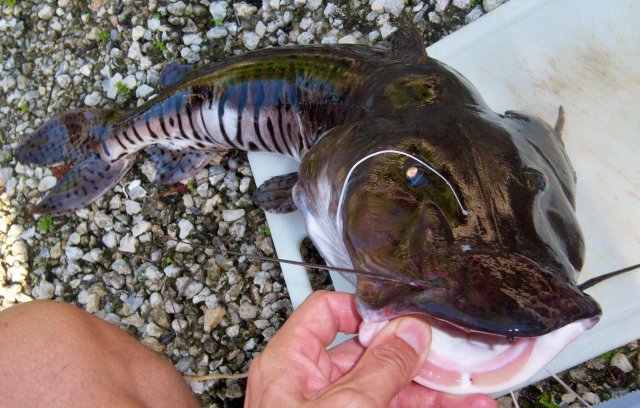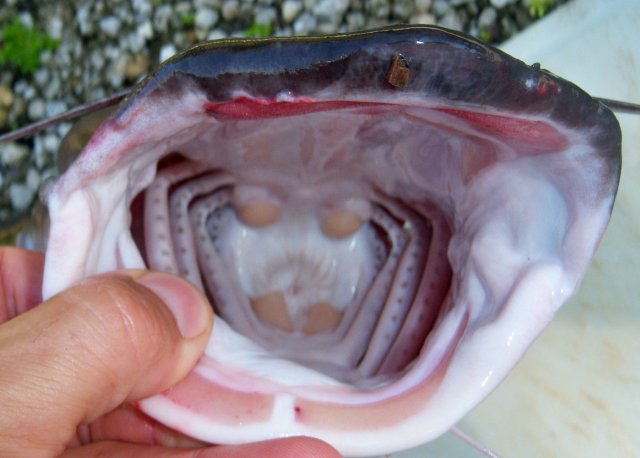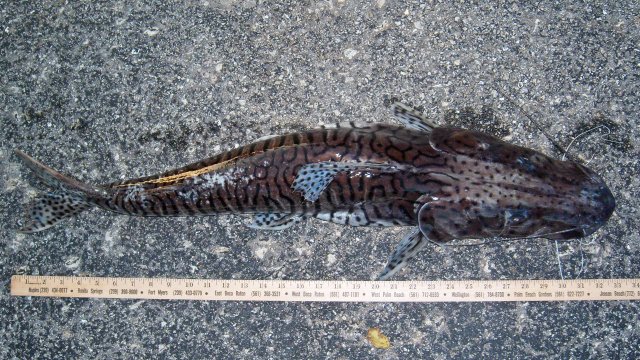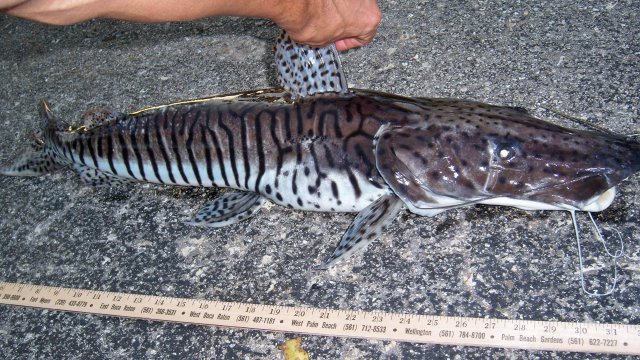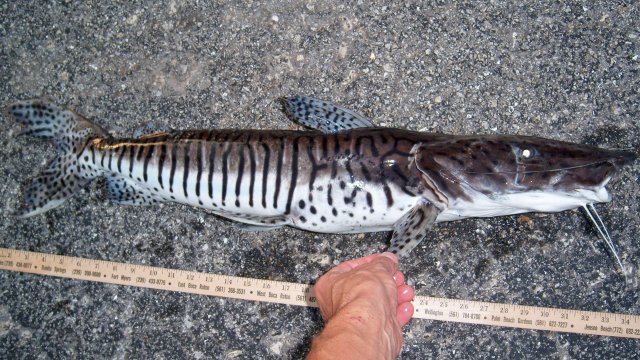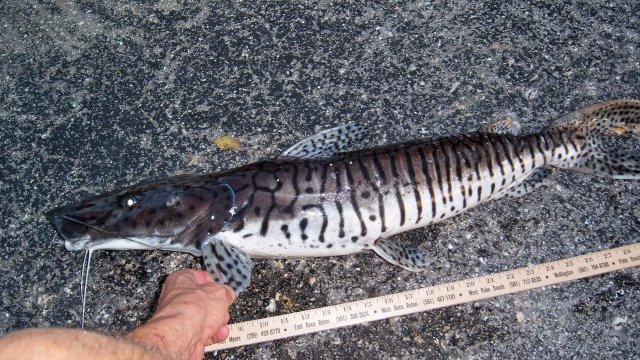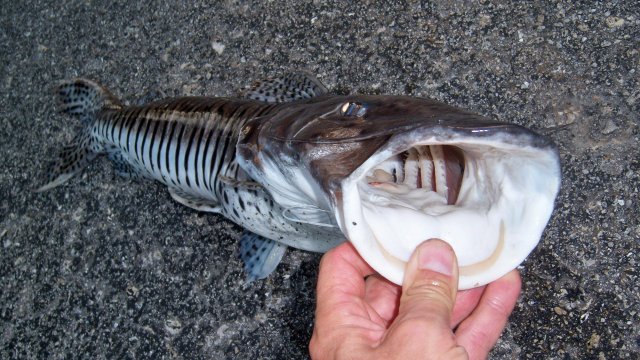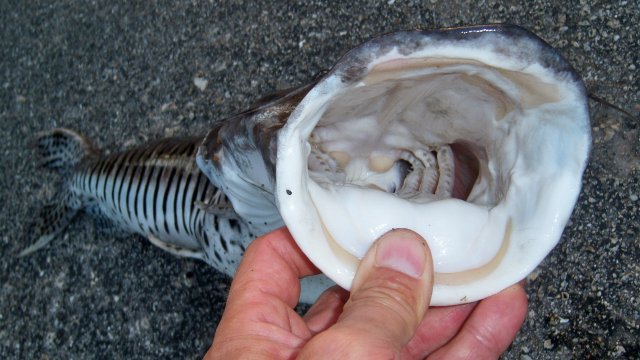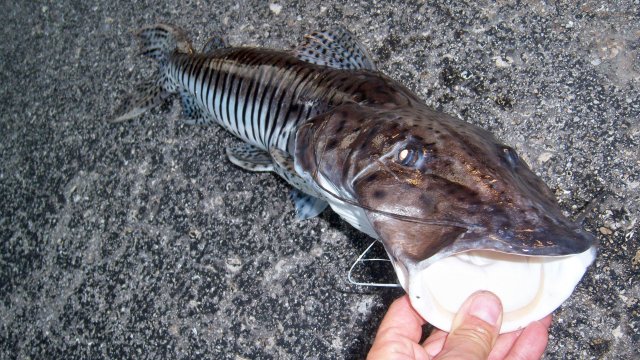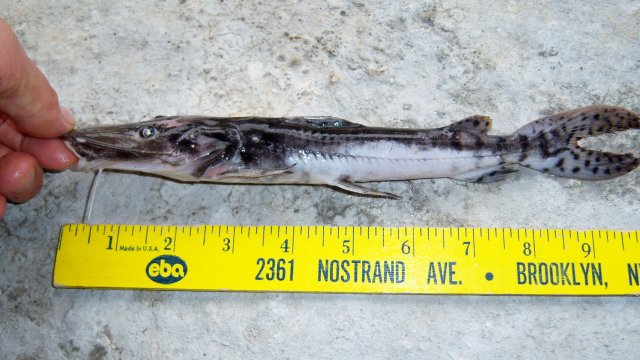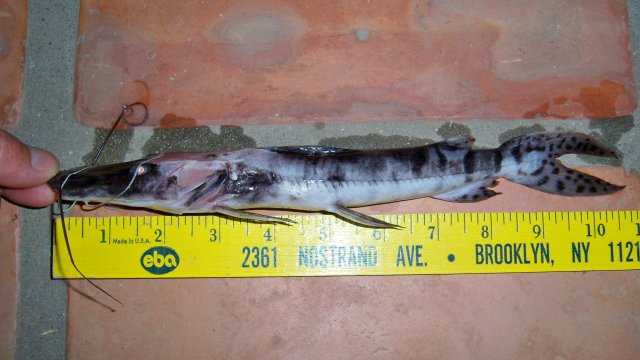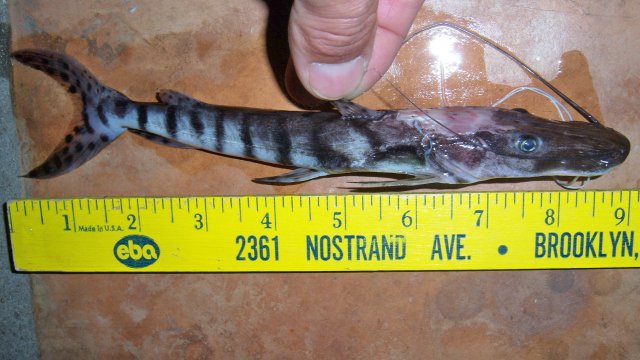Although
 wednesday13
might disagree, I still tend to think our farm-culled TSNs may inherently not live long.
wednesday13
might disagree, I still tend to think our farm-culled TSNs may inherently not live long.
So here is another example. Jeff aka V victor448 donated this TSN to us about a year or two ago. It was several years old back then and only ~18". Other than that, it looked good.
It had done well in 4500 gal with RTCs and Co. Had been feeding exceptionally well but only grew to 23". Last week it was still feeding well on pellets. This week it stopped and within one week it died. No external damage, no puncture wounds, no bite marks. Sorry, Jeff.
I think it died of natural causes, probably at ~5 years old, consistent with the OP case. I didn't see anything glaringly wrong when I cut it open.
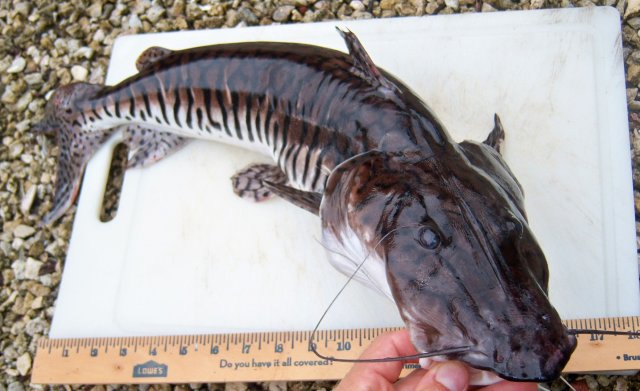
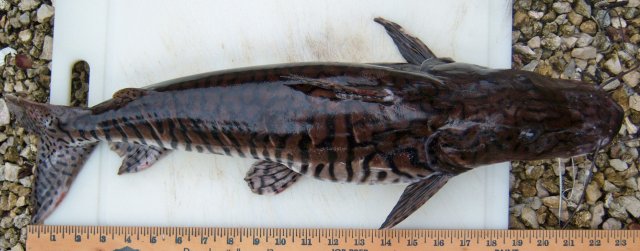
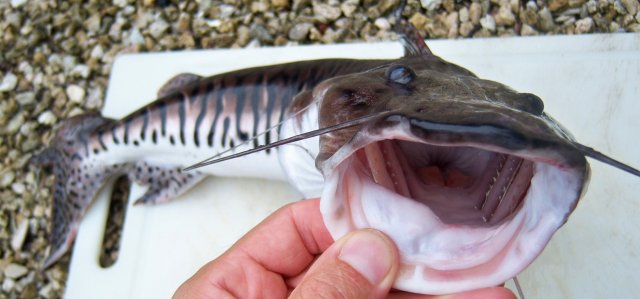
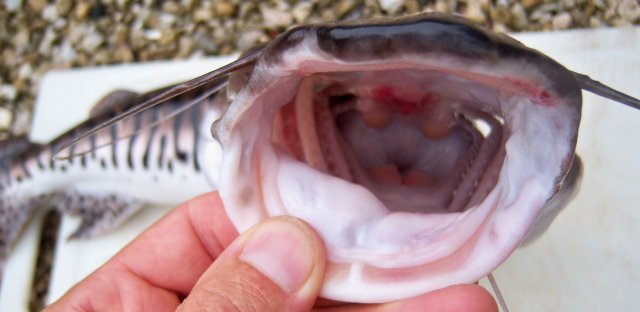
Speaking of TSN deaths, a peer also donated his 26"-er to us some weeks back. It's been fed hot dogs all its life (has been ~7-8 years with that peer, who was second owner) and it had a beer tummy. I guessed it was due to fat deposits or just too much food. It had done well for a week and then the next night it was killed by persistent attempts to swallow it from the tail end.
It was pretty mellow in general, which is not a good thing when fish go into my aggressive 4500 gal - the old timers think every new fish that goes in there is their food. So I stuck a large landing net in the tank for several days, to help the new comer adjust with less stress. Most old timers don't like the net or the newness that it introduces and stay away in the corners, a bit stressed out, and hence, don't bug new fish.
They "killed" it about 2-3 days after I removed the net. It was still alive in the morning and I rehomed it to 240 gal. I had other cats survive the injuries the TSN had sustained but it died in 2 days and when I cut it open I found out why - the fish was chuck full of eggs and hence was weakened.
Never seen TSN with eggs before. Two huge sacks of eggs. On the upside, its internal organs looked clean, no fat deposits at all! Those must have been very lean hot dogs.
Anyhow, live and learn.
So here is another example. Jeff aka V victor448 donated this TSN to us about a year or two ago. It was several years old back then and only ~18". Other than that, it looked good.
It had done well in 4500 gal with RTCs and Co. Had been feeding exceptionally well but only grew to 23". Last week it was still feeding well on pellets. This week it stopped and within one week it died. No external damage, no puncture wounds, no bite marks. Sorry, Jeff.
I think it died of natural causes, probably at ~5 years old, consistent with the OP case. I didn't see anything glaringly wrong when I cut it open.




Speaking of TSN deaths, a peer also donated his 26"-er to us some weeks back. It's been fed hot dogs all its life (has been ~7-8 years with that peer, who was second owner) and it had a beer tummy. I guessed it was due to fat deposits or just too much food. It had done well for a week and then the next night it was killed by persistent attempts to swallow it from the tail end.
It was pretty mellow in general, which is not a good thing when fish go into my aggressive 4500 gal - the old timers think every new fish that goes in there is their food. So I stuck a large landing net in the tank for several days, to help the new comer adjust with less stress. Most old timers don't like the net or the newness that it introduces and stay away in the corners, a bit stressed out, and hence, don't bug new fish.
They "killed" it about 2-3 days after I removed the net. It was still alive in the morning and I rehomed it to 240 gal. I had other cats survive the injuries the TSN had sustained but it died in 2 days and when I cut it open I found out why - the fish was chuck full of eggs and hence was weakened.
Never seen TSN with eggs before. Two huge sacks of eggs. On the upside, its internal organs looked clean, no fat deposits at all! Those must have been very lean hot dogs.
Anyhow, live and learn.


